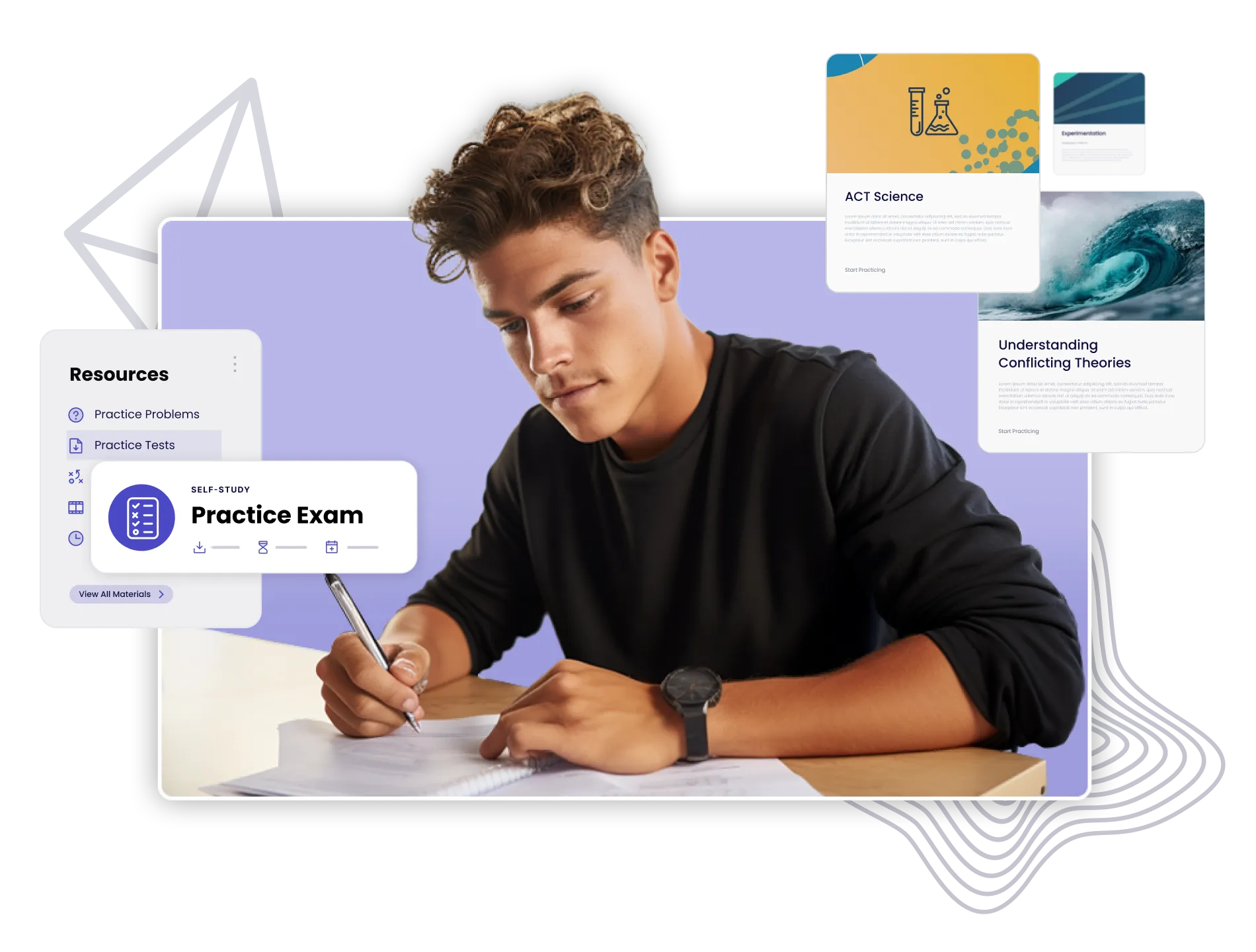Your 2024 College Prep Plan

The new year is a great time to take inventory of the big picture, laying out your fresh, new calendar and looking ahead to the milestones you’ll encounter and achieve. And if you’re a high school student, a big part of the big picture is this: 2024 will be a big year for your college aspirations. Of course, if you’re a senior, it’s the year you begin that next step, and if you’re a junior, it’s the year you apply. If you’re a freshman or sophomore, it’s a pivotal year for creating the elements on your eventual application.
To make sure you get off to a good start on this big year, let’s break down the most important things that should be on your agenda for the first half of the year.
12th Graders
When the stress of finalizing applications is done, shouldn’t you get some time to just coast and enjoy your last semester of high school? Springtime won’t be nearly as hectic as fall was, but there are some important steps you can take to maximize your chances at your top choice schools and to make the experience all the better once you get there.
- Fill out the FAFSA. The Free Application for Federal Student Aid (FAFSA) is traditionally available in October, but a revamp of the process delayed this year’s launch until over the holidays with a floating “when it’s ready, by December 31” release date. If it fell off your radar for uncertainty’s sake, take this reminder to fill it out, especially since many states administer their aid on a first-come, first-served basis.
- Don’t wait on the waitlist. Not only will schools consider new accomplishments as part of your candidacy, but they’ll also be looking for signals that the students they admit off the waitlist–when the clock is ticking to fill seats for the fall–will actually attend. So it pays to be proactive: call or write the admissions committee to show that you’re an even better candidate who really loves their school, and you’ll maximize your chances of getting in off the waitlist.
- Go for extra credit. Between the May AP exams and the spring/summer terms at your local community college, you have a great opportunity to bank some college credits and take care of prerequisite classes and requirements so that you have better schedule options on campus. That can open up more room to experiment with potential majors, or allow you to focus more on the competitive classes that gate the schools or majors you want to give your best shot. And showing colleges that you’ve aced APs or are already taking college-level courses goes a long way toward getting admitted off the waitlist, too.
- Search for scholarships. If by now you never want to hear the terms “application deadline” or “application essay” ever again, no one can blame you. But if you’re willing to see past that, there’s a world of opportunity awaiting you. The world is full of scholarship opportunities and the secret ingredient is hustle: the more you search and apply, the more free money you’ll get toward college. (And, remember, your competition is every bit as worn out by application essays as you are, so taking that first step of applying often separates you from most of the pack). There is no one application deadline: from now until you graduate college, if you’re looking you’ll find opportunities to save money, so make the scholarship search a part of your routine starting now.
11th Graders
As an 11th grader this January, you’ve just begun one of the busiest years of your life–and hopefully that’s as exciting as it is daunting! With less than a year until you apply to college, and with colleges looking intently at what you accomplish over that time, you’ve got a lot of opportunities in front of you, so let’s break down the winter and spring so that you don’t miss out on opportunities.
January-February
- Talk to your counselor. A critical component of your application is a letter your guidance counselor sends schools commenting on how your academic performance and rigor of schedule compare to your peers. So now is your time to find out: will that information look good to the schools you’re targeting? And if not, how can you update your schedule and spend your summer to improve it? Your counselor is the one making that determination, so have that discussion while you still have time to improve it.
- Build your springtime test plan. The spring gets packed quickly: there’s a March SAT, an April ACT, then a whirlwind of May AP exams and May/June final exams plus SAT and ACT opportunities. So now is the time to build out a calendar: the AP exams and your school’s finals (plus important dates like family vacations, championship meets, school plays, and the prom) are fixed, but you can choose between the SAT and ACT and which dates you want to target. Plan out which tests you’ll take, what you’ll need to do to be ready, and how you’ll fit everything into your schedule.
- Get serious about school research. One of the most important to-do items on your list this year doesn’t have a deadline that’s set for you: school research and creation of your target school list. By the fall you need to know which schools you're targeting, which means that if you want to visit schools the summer is a key period of time. And that means that this winter is an important period to learn about schools, get serious about your selection criteria, and make plans to visit schools (either virtually or in person) between now and the summer. You’ll spend a lot of time this spring and fall demonstrating what you have to offer schools (via springtime tests and classes and fall applications) so winter and summer are your seasons to find out what schools have to offer you.
March-June
- It’s test & transcript season. When you submit your applications, schools will look heavily at your junior year grades and your performance on AP exams and the SAT or ACT. And in a three-month period, you have the opportunity to put big points on the board in all of them. So buckle down and take the extra time to prep for tests and finish papers and products to the best of your ability: this spring it all just matters a bit more. Remember, too, that you can always retake the SAT or ACT this summer and fall (or, in a pinch, go test-optional at most schools) so if something has to give, that’s where you can borrow the time.
- Line up recommendations. Many applications require letters of recommendations beyond the form letters that guidance counselors send in. And while they’re technically not due until next winter, remember that teachers are busiest in the fall–and that you may have 6 teachers per semester but they each have 100+ students. So line up your recommenders before school is out for summer: they’ll remember you well because you just spent a year in their class, and they’ll have the time to write thoughtful letters over the summer. And they’ll appreciate you being thoughtful about their time, which is exactly what you want when you’re hoping they’ll say nice things about you.
- Brainstorm personal statements. Before you actually sit down to write essays, spend some time reflecting on what you really want them to be about. What do you want colleges to know about you? Which subjects are you most fascinated by? Which achievements or activities really tell the story of who you are and who you’re becoming? If you’ve thought about these things during downtime–exercising, showering, walking to and from school–then you’re more likely to have strong options when you do finally sit down to look at the prompts and start writing.
9th and 10th Graders
Here’s the way college applications work: you apply in the fall of your senior year mostly by telling schools about who you were as a sophomore and junior. So right now you’re in the most control of your application that you’ll ever be, and 2024 is the year to take advantage. Here’s how to seize this next semester:
- Build a schedule. When schools look at your transcripts in a few years, they’ll look for two things: challenging classes and high grades. And, as you likely know by now, challenging classes make it harder to get those high grades. So the earlier you can sit with your counselor to plan your schedule–not just for next year, but with an eye toward your complete transcript–the better. That way you can find time to balance out AP and other honors classes, ensure you’re taking the classes you need in order so you can qualify for the classes you want in the future, and you’re taking a schedule that you can see yourself thriving with.
- Visit local campuses and info sessions. Before you start researching and visiting the colleges you want to attend, it’s extremely helpful to just visit colleges, in general, to get an idea of what’s available and what’s interesting. So just visiting a nearby campus to take a tour, or dropping into info sessions hosted by colleges, is a great way to start considering criteria before those visits really start to matter.
- Look for leadership and impact opportunities. Your history classes will teach you that Rome wasn’t built in a day–and neither are your extracurricular activities, which colleges will look at to see what kind of leadership and impact you had. So take some time this spring to look at your activities: where can you see yourself becoming a leader or making some notable accomplishments? And how can you dedicate more time and effort to doing that? If you don’t see that path, look for things you can join–or start–so that you’re ready to start building a resume. Generally speaking, 9th grade is about joining and experimenting, 10th grade is about finding some things you really want to focus on, and then in 11th and 12th grade you want to leave your mark. Are you on that path? If you’re not, you can start making progress this semester.

